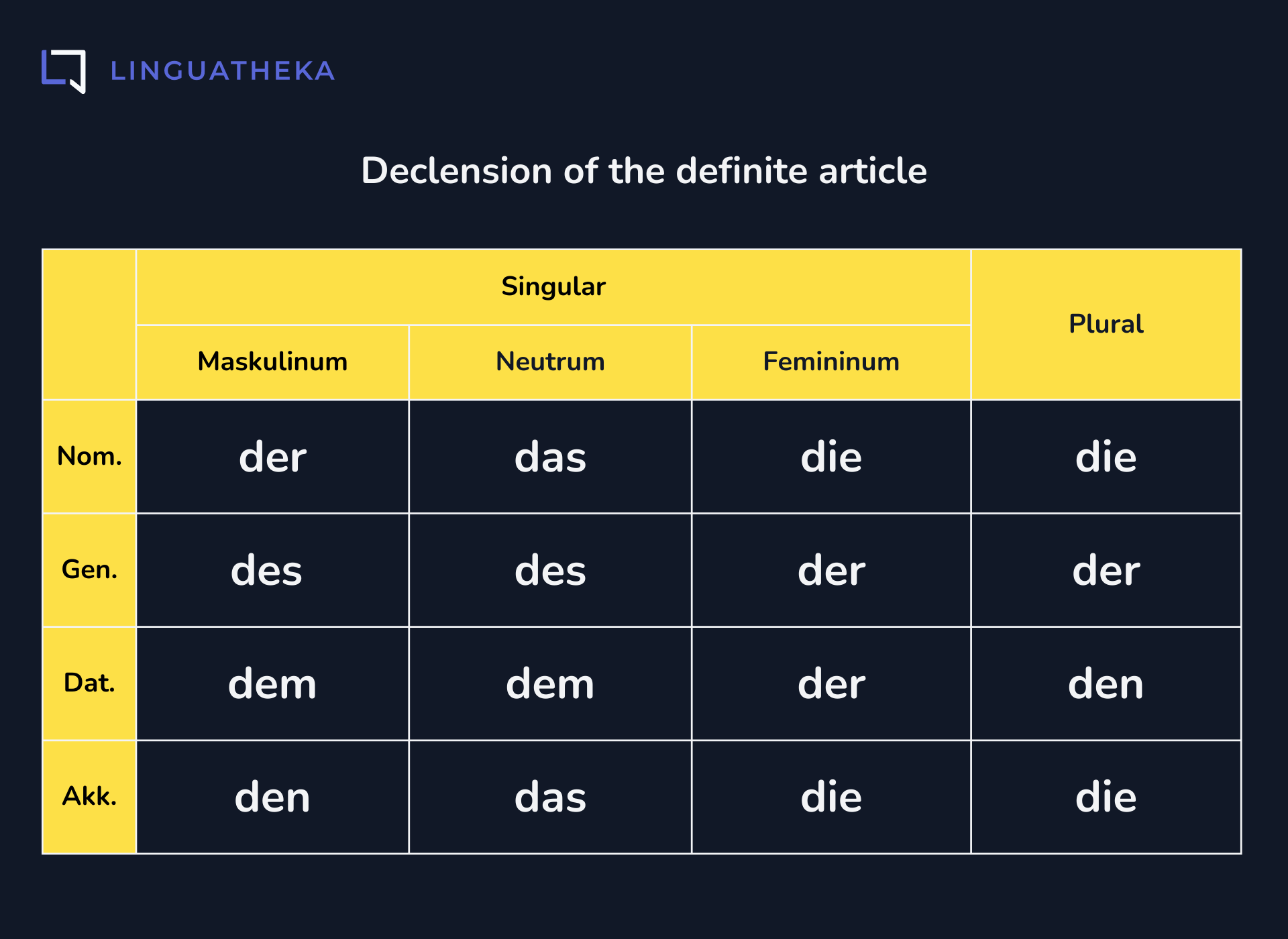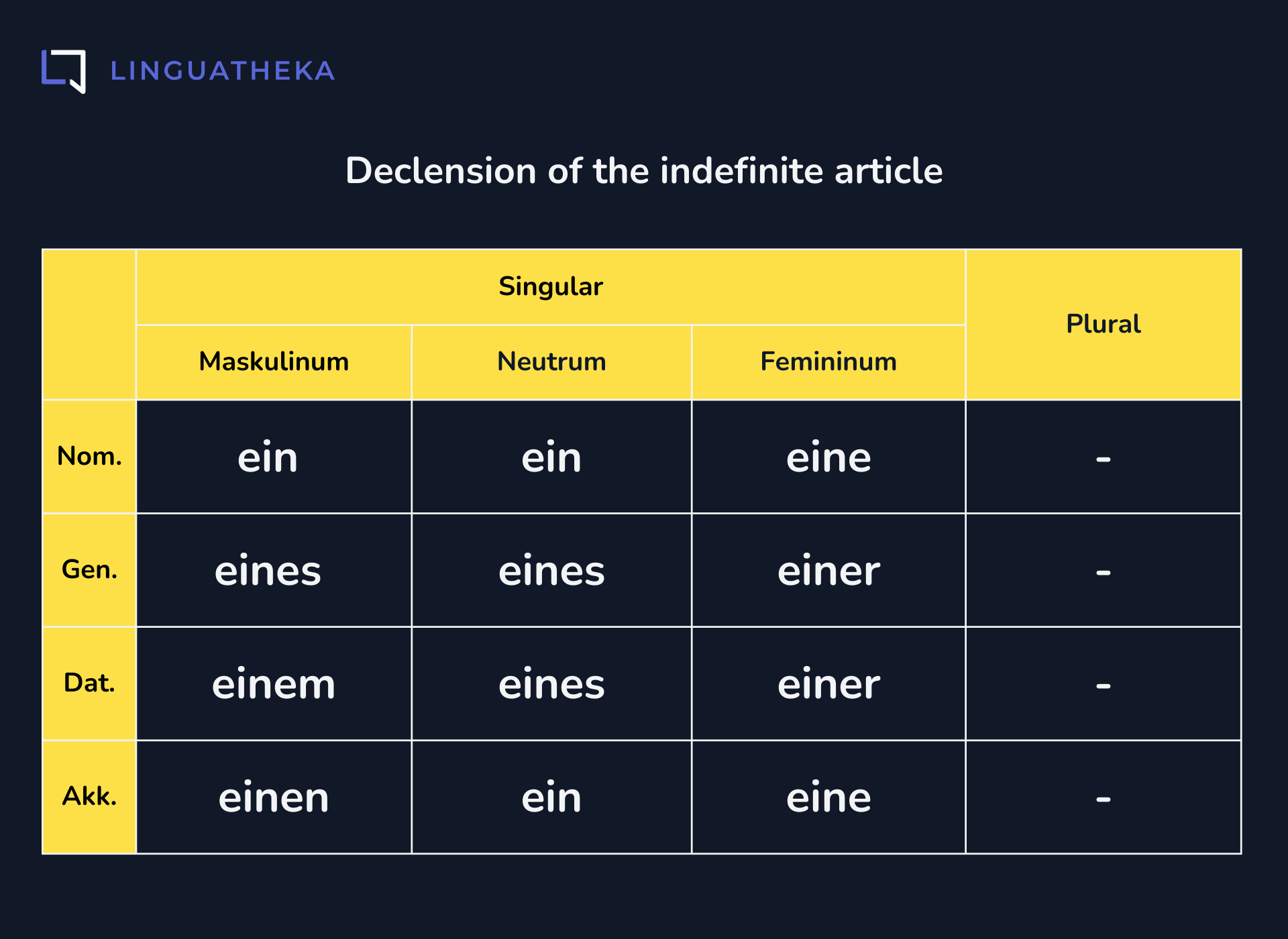Articles - what are they and why are they needed in the German language?
For beginners who are just starting to learn German, this question is quite common. What kind of part of speech is it, and how is it used in the German language? We will explore that in this article.
An article is a function word that, in German, serves as an indicator not only of the gender, number, and case of nouns, but also of whether something is definite or indefinite. Based on this, we distinguish the definite article: der, die, das – for singular nouns of masculine, feminine, and neuter gender respectively, and die - for plural nouns; the indefinite article: ein, eine, ein - for masculine, feminine, and neuter gender respectively; and also the zero article, which means the article is simply not used. Now let’s take a closer look at when we use each type of article.
Cases for using the indefinite article:
Eine Katze schläft. - A cat is sleeping.
Ein Junge spielt Fußball. - A boy is playing football.
Ein Mädchen malt. - A girl is drawing.
In all of these examples, we are encountering the subjects for the first time - we didn’t know anything about them before.
Friedrich kam und brachte ein Mädchen mit. - Friedrich came and brought a girl.
We used the indefinite article ein Mädchen here because we don’t know who the girl is - we are seeing her for the first time.
Ich habe eine Flasche. - I have a bottle.
Es gibt ein Tisch im Raum. - There is a table in the room.
Cases for using the definite article:
For example:
Eine Katze schläft. Die Katze ist rot. - A cat is sleeping. The cat is red.
In the second sentence, we already know which cat is meant - the one that is sleeping - so it’s familiar to us.
Sie hat heute eine Prüfung. Die Prüfung in Biologie. - She has an exam today. The biology exam.
die Frühling - spring
der April - April
der Montag - Monday
die Spree - Spree (river)
der Bodensee - Lake Constance
die Alpen - the Alps
die Nordsee - the North Sea
der Atlantik - the Atlantic Ocean
die Venus - Venus
Here’s another example that contrasts the definite and indefinite article:
Da kommt eine Frau. Die Frau hat eine rote Tasche. - Here comes a woman. The woman has a red bag.
In the first sentence, we’re mentioning the woman for the first time, so we don’t know her yet. That’s why we use the indefinite article eine Frau. In the second sentence, we know which woman we’re talking about - the one who just arrived - so we use the definite article die Frau.
Cases where the zero article (no article) is used:
Ich heiße Katarina Schwarz. - My name is Katarina Schwarz.
Dresden - Dresden
Deutschland - Germany
Tee - tea
Kaffee - coffee
Zucker - sugar
Mein Heft - my notebook
Dieses Heft - this notebook
Drei Hefte - three notebooks
Viele Hefte - many notebooks
Also remember that articles change according to case. You can see the declension tables below.


Don’t forget that grammatical gender in German often doesn’t match Russian or English. That’s why it’s best to learn nouns together with their articles.
How clear and useful was the article to you?
Start now
days
hours
min
sec
Price €304.00
Language Deutsch, A1.1
Start November 28, 2025
Course Intensiv Kurs A1.1
Group #118
Start now
days
hours
min
sec
Price €304.00
Language Deutsch, A1.1
Start November 28, 2025
Course Intensiv Kurs A1.1
Group #118



